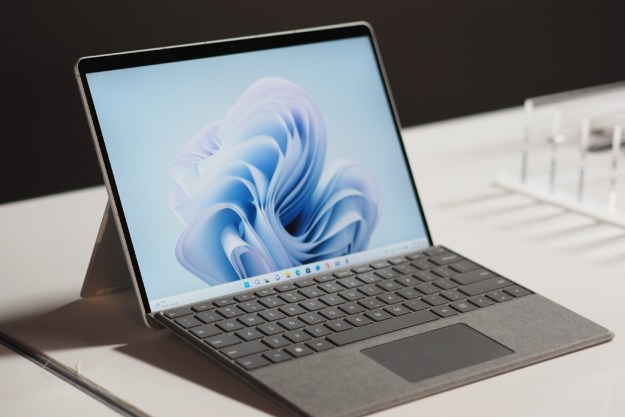
A supposed leaked benchmark shows that Nvidia’s new GeForce RTX 2080 graphics card outperforms the current GeForce GTX 1080 Ti in the 3DMark Time Spy benchmark. Note that this performance has nothing to do with the ray tracing aspect, but rather a meat-and-potatoes comparison between the two using the current Time Spy benchmark.
The leaked benchmark appears as a screenshot on Tum Apisak’s Twitter feed, a well-known overclocker. The new card scored 10,030 points versus the GeForce GTX 1080 Ti with 9,508 points and the original GTX 1080 with 7,325 points.
Look a little further and you’ll see the RTX 2080 managed an average of 64.53 frames per second while the GTX 1080 Ti was a lower 61.14 frames per second and the GTX 1080 at 47.19 frames per second. For the second test, the RTX 2080 managed 58.17 frames per second followed by the GTX 1080 Ti (55.17 FPS) and the GTX 1080 (42.44 FPS).
Given Nvidia’s RTX 20 Series is already out of the bag, we know the RTX 2080 hits shelves on September 20. We also know that review units are already out in the wild for testing. What’s interesting is that the leaked benchmark only focuses on the RTX 2080 and doesn’t include the beefier RTX 2080 Ti arriving in September as well.
The actual benchmark appears on 3DMark here, listed as a “generic VGA” card. The RTX 2080 resided in a test bed with the Intel Core i7-7740X processor using driver version 24.21.14.1117. The listing shows a core clock of 2,025MHz, a memory bus clock of 7,000MHz, and just over 8GB of video memory.
If you missed the pre-show Gamescom event, Nvidia’s RTX 2080 consists of 2,944 CUDA cores with a base speed of 1,515MHz and a maximum speed of 1,710MHz. It ships with 8GB of GDDR6 dedicated video memory with a bandwidth of 448GB/s through a 256-bit interface. The Founders Edition version cranks up the maximum speed to 1,800MHz, requiring a bit more power. The starting price is $700.
Meanwhile, the RTX 2080 Ti has 4,352 cores with a base speed of 1,350MHz and a maximum speed of 1,545MHz. It includes 11GB of GDDR6 dedicated video memory with a bandwidth of 616GB/s using a 352-bit interface. The Founders Edition increases the maximum speed to 1,635MHz for slightly more power. The starting price is $1,000.
The big deal with these cards is that they have cores dedicated to real-time ray tracing (RT Cores) and artificial intelligence (Tensor Cores). The problem is that despite Nvidia claiming numbers regarding “giga rays per second” and the related operations per second, there are no benchmarks to confirm these numbers. Nvidia even said benchmarks need to take a different approach.
That said, UL Benchmarks is working on a new 3DMark benchmark based on DirectX Ray Tracing. This is to prevent invalidating previous scores seen in other tests such as Time Spy and Fire Strike. That said, you can still use these tests to benchmark non-
Editors' Recommendations
- RTX 4070 Ti benchmarks leak: Is Nvidia about to undercut AMD?
- Here’s why Nvidia might start selling the GTX 1080 Ti, a four-year old GPU
- Nvidia RTX 3070 vs. RTX 2080 Ti: Can a mid-range GPU beat the best of last-gen?
- Leaked benchmarks show RTX 3060 Ti outperforming RTX 2080 Super
- Nvidia GTX 1660 Ti vs. RTX 2060


